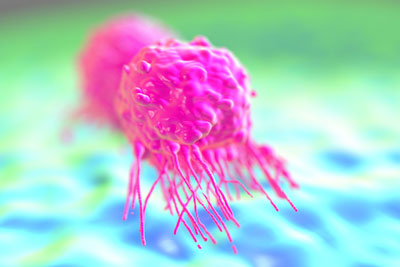ICR scientists develop Ecosystem Diversity Index for breast cancers
Posted: 16 February 2016 | | No comments yet
Scientists have developed a test called the Ecosystem Diversity Index which combines methods used by ecologists with a powerful cancer imaging technique…


Breast cancers which are particularly complex and diverse, as judged by a test used in ecology to analyse species of animals and plants, are particularly likely to progress and lead to death, a new study shows.


The test could be used in the clinic to assess how likely women’s breast cancers are to be aggressive, and to help tailor treatment accordingly.
Scientists at The Institute of Cancer Research, London, developed a test called the Ecosystem Diversity Index which combines methods used by ecologists with a powerful cancer imaging technique to pick out cancerous cells from normal cells in tumours. The test identified several particularly aggressive subgroups of breast cancer and was a stronger predictor of survival than many established markers for the disease. It was effective at predicting survival chances in high-grade tumours.
Researchers combined software taken from the study of ecology with image analysis and examined 1,026 samples of untreated breast tumours from three different hospitals. They analysed three distinct cell types – cancer cells, immune system lymphocytes and stromal cells, which produce connective tissue – in place of species of animals and plants in natural ecosystems. Patients with high-grade tumours larger than five centimetres in diameter whose tumours scored high on the Ecosystem Diversity Index had a 16 per cent chance of surviving five years, compared with 50 per cent for tumours with low diversity scores.
Looking at the Ecosystem Diversity Index in addition to genetic factors
The ICR researchers also looked at the Ecosystem Diversity Index in addition to genetic factors – the first time a study has analysed the impact of different cell types around a tumour together with genetic information. They found that patients who had tumours with a high diversity score together with mutations in the p53 tumour suppressor gene had especially poor survival chances.
Commenting on the new measure, study leader Dr Yinyin Yuan, Team Leader in the Centre for Evolution and Cancer at The Institute of Cancer Research, London, said: “Our findings show that mathematical models of ecological diversity can spot more aggressive cancers. By analysing images of the environment around a tumour based on Darwinian natural selection principles, we can predict survival in some breast cancer types even more effectively than many of the measures used now in the clinic.
“In the future, we hope that by combining cell diversity scores with other factors that influence cancer survival, such as genetics and tumour size, we will be able to tell apart patients with more or less aggressive disease so we can identify those who might need different types of treatment.”
Dr Rachael Natrajan, Team leader in the Breast Cancer Now Toby Robins Research Centre at The Institute of Cancer Research, London, added: “Integration of our new measure with genetic alterations can actually provide additional prognostic information from just genetics alone, and may pave the way for a new wave of diagnostic biomarkers.”




